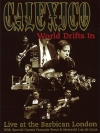 There's
not a lot of concert performances that I make a point of
owning; however this one is an exception. A few months prior to
releasing their 2003 Feast of Wire disc, Calexico took to the road with
their augmented touring group, captured brilliantly in performance on
this DVD. World Drifts In: Live at the Barbican London
is an extra special evening as they'd brought along the wonderful group
Mariachi Luz de Luna from their home town of Tucson, AZ to add an
authentic flavor to their sound. Shot on video, which for this occasion
looks better than film would, this exciting performance from November
27, 2002 is nicely edited together from several angles, including one
of my favorites: right beside drummer John Convertino. Anyone that's
seen the band live can attest to his mastery of the trapkit, which is a
joy to watch. The crystal clear sound appears to be a direct line from
the soundboard, with some room mikes capturing the ambience. There are
a few moments when Joey Burns' splendid vocal performances on the newer
tunes sound better than on what would be their new disc, which seems
hard to believe. At 90 minutes, the material performed spans their
short yet rich career, including a few traditional Mexicali numbers
which highlight the Mariachi Luz de Luna's members as well as a
traditional-sounding French number featuring chanteuse, Françoiz Breut.
In addition to the performance, the DVD includes an additional hour's
worth of extras which include homestyle/silent movies (set to Calexico
tunes) of the band's 2003 European tour, interviews from the road with
various members of the touring posse and excerpts from the making of
Feast of Wire.
Of course, videos for "The Black Light," "Ballad of Cable Hogue," and
"Crystal Frontier" are included, which up to now I'd only seen as
Quicktime files on various EPs. Also included is a humorous two-minute
cartoon featuring the group's music and a brief documentary (shot by
Señor Burns) which covers the origins of Mariachi through interviews
with members of Mariachi Luz de Luna. I understand that this DVD has
been available in the UK and Europe for a number of months now, as if
to mock those of us in Region 1. Calexico put on one of the best
performances I've seen in recent years, though in a club exceptionally
smaller than the Barbican. Not surprisingly, although the performance
on this DVD is nothing but stellar, it still doesn't top being
there—but it comes awfully close.
There's
not a lot of concert performances that I make a point of
owning; however this one is an exception. A few months prior to
releasing their 2003 Feast of Wire disc, Calexico took to the road with
their augmented touring group, captured brilliantly in performance on
this DVD. World Drifts In: Live at the Barbican London
is an extra special evening as they'd brought along the wonderful group
Mariachi Luz de Luna from their home town of Tucson, AZ to add an
authentic flavor to their sound. Shot on video, which for this occasion
looks better than film would, this exciting performance from November
27, 2002 is nicely edited together from several angles, including one
of my favorites: right beside drummer John Convertino. Anyone that's
seen the band live can attest to his mastery of the trapkit, which is a
joy to watch. The crystal clear sound appears to be a direct line from
the soundboard, with some room mikes capturing the ambience. There are
a few moments when Joey Burns' splendid vocal performances on the newer
tunes sound better than on what would be their new disc, which seems
hard to believe. At 90 minutes, the material performed spans their
short yet rich career, including a few traditional Mexicali numbers
which highlight the Mariachi Luz de Luna's members as well as a
traditional-sounding French number featuring chanteuse, Françoiz Breut.
In addition to the performance, the DVD includes an additional hour's
worth of extras which include homestyle/silent movies (set to Calexico
tunes) of the band's 2003 European tour, interviews from the road with
various members of the touring posse and excerpts from the making of
Feast of Wire.
Of course, videos for "The Black Light," "Ballad of Cable Hogue," and
"Crystal Frontier" are included, which up to now I'd only seen as
Quicktime files on various EPs. Also included is a humorous two-minute
cartoon featuring the group's music and a brief documentary (shot by
Señor Burns) which covers the origins of Mariachi through interviews
with members of Mariachi Luz de Luna. I understand that this DVD has
been available in the UK and Europe for a number of months now, as if
to mock those of us in Region 1. Calexico put on one of the best
performances I've seen in recent years, though in a club exceptionally
smaller than the Barbican. Not surprisingly, although the performance
on this DVD is nothing but stellar, it still doesn't top being
there—but it comes awfully close. There's
not a lot of concert performances that I make a point of
owning; however this one is an exception. A few months prior to
releasing their 2003 Feast of Wire disc, Calexico took to the road with
their augmented touring group, captured brilliantly in performance on
this DVD. World Drifts In: Live at the Barbican London
is an extra special evening as they'd brought along the wonderful group
Mariachi Luz de Luna from their home town of Tucson, AZ to add an
authentic flavor to their sound. Shot on video, which for this occasion
looks better than film would, this exciting performance from November
27, 2002 is nicely edited together from several angles, including one
of my favorites: right beside drummer John Convertino. Anyone that's
seen the band live can attest to his mastery of the trapkit, which is a
joy to watch. The crystal clear sound appears to be a direct line from
the soundboard, with some room mikes capturing the ambience. There are
a few moments when Joey Burns' splendid vocal performances on the newer
tunes sound better than on what would be their new disc, which seems
hard to believe. At 90 minutes, the material performed spans their
short yet rich career, including a few traditional Mexicali numbers
which highlight the Mariachi Luz de Luna's members as well as a
traditional-sounding French number featuring chanteuse, Françoiz Breut.
In addition to the performance, the DVD includes an additional hour's
worth of extras which include homestyle/silent movies (set to Calexico
tunes) of the band's 2003 European tour, interviews from the road with
various members of the touring posse and excerpts from the making of
Feast of Wire.
Of course, videos for "The Black Light," "Ballad of Cable Hogue," and
"Crystal Frontier" are included, which up to now I'd only seen as
Quicktime files on various EPs. Also included is a humorous two-minute
cartoon featuring the group's music and a brief documentary (shot by
Señor Burns) which covers the origins of Mariachi through interviews
with members of Mariachi Luz de Luna. I understand that this DVD has
been available in the UK and Europe for a number of months now, as if
to mock those of us in Region 1. Calexico put on one of the best
performances I've seen in recent years, though in a club exceptionally
smaller than the Barbican. Not surprisingly, although the performance
on this DVD is nothing but stellar, it still doesn't top being
there—but it comes awfully close.
There's
not a lot of concert performances that I make a point of
owning; however this one is an exception. A few months prior to
releasing their 2003 Feast of Wire disc, Calexico took to the road with
their augmented touring group, captured brilliantly in performance on
this DVD. World Drifts In: Live at the Barbican London
is an extra special evening as they'd brought along the wonderful group
Mariachi Luz de Luna from their home town of Tucson, AZ to add an
authentic flavor to their sound. Shot on video, which for this occasion
looks better than film would, this exciting performance from November
27, 2002 is nicely edited together from several angles, including one
of my favorites: right beside drummer John Convertino. Anyone that's
seen the band live can attest to his mastery of the trapkit, which is a
joy to watch. The crystal clear sound appears to be a direct line from
the soundboard, with some room mikes capturing the ambience. There are
a few moments when Joey Burns' splendid vocal performances on the newer
tunes sound better than on what would be their new disc, which seems
hard to believe. At 90 minutes, the material performed spans their
short yet rich career, including a few traditional Mexicali numbers
which highlight the Mariachi Luz de Luna's members as well as a
traditional-sounding French number featuring chanteuse, Françoiz Breut.
In addition to the performance, the DVD includes an additional hour's
worth of extras which include homestyle/silent movies (set to Calexico
tunes) of the band's 2003 European tour, interviews from the road with
various members of the touring posse and excerpts from the making of
Feast of Wire.
Of course, videos for "The Black Light," "Ballad of Cable Hogue," and
"Crystal Frontier" are included, which up to now I'd only seen as
Quicktime files on various EPs. Also included is a humorous two-minute
cartoon featuring the group's music and a brief documentary (shot by
Señor Burns) which covers the origins of Mariachi through interviews
with members of Mariachi Luz de Luna. I understand that this DVD has
been available in the UK and Europe for a number of months now, as if
to mock those of us in Region 1. Calexico put on one of the best
performances I've seen in recent years, though in a club exceptionally
smaller than the Barbican. Not surprisingly, although the performance
on this DVD is nothing but stellar, it still doesn't top being
there—but it comes awfully close.
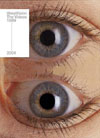 As much as we diss Warp for making bad decisions, they have perfected the right techniques that make them a strong label with a strong identity. Most importantly: present the music in a direct and uncluttered way, with a conscious attention to an appealing design, making sure it is never overpowering: essentially allowing for the music to retain its importance over design. It's essentially what they've done for their first various artist video collection. Warp Vision isn't breaking new grounds nor is it the first of its kind (see: Ninja Tune or Matador), but what it does is collect a wide selection of the music videos that Warp has had something to do with over the years. It has no noticeable Easter Eggs, nor any audio commentary. The menu choices are to play all the videos or select them alphabetically, see the credits and see some images. Noticably absent are videos for Autechre's "Basscadet," Tricky Disco's "Tricky Disco" and "Housefly," anything from Vincent Gallo (THANK GOD), as well as !!! and Tortoise (but then again, they were licensed from US labels so Warp probably doesn't even own the rights to the videos). What is included are everybody's favorite Aphex videos with people running around with his ugly ass face on, Chris Cunningham's brilliant video for Squarepusher's "Come On My Selector" and the Chris Cunningham-wanna be, LFO's "Freak" directed by Daniel Levi (gotta love those fiery young Asian girls), plus videos from Prefuse, Antipop, the inexcusable Jimi Tenor, and many more. I'm pleased to finally be able to see videos for Sweet Exorcist (even if it's a lot of primitive graphics and a Pong! game) and LFO's classic "LFO" and the brilliant "Tied Up." Videos like Broadcast's "Papercuts" are just so visually colorful that it reminds me how much nicer it is to see on a full screen as opposed to a tiny little streaming computer image. A couple Warp TV commercials are included for shits and giggles along with a bonus CD of eleven audio mosaics of various tunes from the Warp vaults mixed by Buddy Pearce and Zilla. The CD is forgettable for the most part, but the DVD has its moments that will please different people depending on their tastes. With any luck 4AD and Mute will take a hint and do something similar. (And if you record execs are actually reading: don't leave anything out next time!)
As much as we diss Warp for making bad decisions, they have perfected the right techniques that make them a strong label with a strong identity. Most importantly: present the music in a direct and uncluttered way, with a conscious attention to an appealing design, making sure it is never overpowering: essentially allowing for the music to retain its importance over design. It's essentially what they've done for their first various artist video collection. Warp Vision isn't breaking new grounds nor is it the first of its kind (see: Ninja Tune or Matador), but what it does is collect a wide selection of the music videos that Warp has had something to do with over the years. It has no noticeable Easter Eggs, nor any audio commentary. The menu choices are to play all the videos or select them alphabetically, see the credits and see some images. Noticably absent are videos for Autechre's "Basscadet," Tricky Disco's "Tricky Disco" and "Housefly," anything from Vincent Gallo (THANK GOD), as well as !!! and Tortoise (but then again, they were licensed from US labels so Warp probably doesn't even own the rights to the videos). What is included are everybody's favorite Aphex videos with people running around with his ugly ass face on, Chris Cunningham's brilliant video for Squarepusher's "Come On My Selector" and the Chris Cunningham-wanna be, LFO's "Freak" directed by Daniel Levi (gotta love those fiery young Asian girls), plus videos from Prefuse, Antipop, the inexcusable Jimi Tenor, and many more. I'm pleased to finally be able to see videos for Sweet Exorcist (even if it's a lot of primitive graphics and a Pong! game) and LFO's classic "LFO" and the brilliant "Tied Up." Videos like Broadcast's "Papercuts" are just so visually colorful that it reminds me how much nicer it is to see on a full screen as opposed to a tiny little streaming computer image. A couple Warp TV commercials are included for shits and giggles along with a bonus CD of eleven audio mosaics of various tunes from the Warp vaults mixed by Buddy Pearce and Zilla. The CD is forgettable for the most part, but the DVD has its moments that will please different people depending on their tastes. With any luck 4AD and Mute will take a hint and do something similar. (And if you record execs are actually reading: don't leave anything out next time!)
 The fourth DVD release from Sublime Frequencies is a 50-minute
travelogue through the rural, impoverished region of Northeast
Thailand, an area known as Isan. The culture of Isan is distinct from
the rest of Thailand because of the marked Laotian and Khmer influence.
Because of its remoteness and relative poverty, Isan has escaped the
Westernizing reforms that have affected the rest of the country, thus
their indigenous culture and unique heritage has been well preserved
throughout their years. Documentarian Hisham Mayet shot this footage in
March of this year, and has done a very good job in capturing much of
the unique character of the region. The film opens with a traditional
ceremony and festival demonstrating the rich cultural heritage of the
four dominant tribes of Isan: Khmer, Suai, Lao and Yo. It showcases
marching regalia of costumed Thai, demonstrations of skills such as
fire-breathing, synchronized sword fighting and acrobatics, culminating
in a bizarre ritual involving the crowd throwing live chickens into the
air and chasing rabbits through the grass. Laotian women participate in
traditional dances, performing beautifully expressive hand gestures,
synchronized to syrupy Thai music that blares out of a distorted PA
system. The remainder of the travelogue features mainly raw
performances on traditional Isan instruments from a random assortment
of villagers and street musicians. Mr. Ken plays a bamboo khaen, a
large double-sided row of pipes that produce a complex, richly nuanced
sound with interior countermelodies. Mr. Thongbai plays the wod, a
circular arrangement of pan pipes that make an intoxicating and magical
sound. Mr. Thongsai plays a lively folk tune on a phin, a
three-stringed lute that is played identically to a guitar. A few
scenes shot inside gentlemen's clubs in the urban centers of Isan
follow, groups of costumed girls dancing seductively in a style known
as Lam Sing. The finale was recorded on a busy Bangkok street in the
early morning hours, and represents a traditional vocal style called
Lum Glawn. A woman sings along with an amazingly proficient performance
on the khaen pipes, her dynamic vocals flowing freely at breakneck
speed, to match the sophisticated peaks and valleys of the khaen. Isan is a delightful snapshot of a relatively unknown and unsung culture.
The fourth DVD release from Sublime Frequencies is a 50-minute
travelogue through the rural, impoverished region of Northeast
Thailand, an area known as Isan. The culture of Isan is distinct from
the rest of Thailand because of the marked Laotian and Khmer influence.
Because of its remoteness and relative poverty, Isan has escaped the
Westernizing reforms that have affected the rest of the country, thus
their indigenous culture and unique heritage has been well preserved
throughout their years. Documentarian Hisham Mayet shot this footage in
March of this year, and has done a very good job in capturing much of
the unique character of the region. The film opens with a traditional
ceremony and festival demonstrating the rich cultural heritage of the
four dominant tribes of Isan: Khmer, Suai, Lao and Yo. It showcases
marching regalia of costumed Thai, demonstrations of skills such as
fire-breathing, synchronized sword fighting and acrobatics, culminating
in a bizarre ritual involving the crowd throwing live chickens into the
air and chasing rabbits through the grass. Laotian women participate in
traditional dances, performing beautifully expressive hand gestures,
synchronized to syrupy Thai music that blares out of a distorted PA
system. The remainder of the travelogue features mainly raw
performances on traditional Isan instruments from a random assortment
of villagers and street musicians. Mr. Ken plays a bamboo khaen, a
large double-sided row of pipes that produce a complex, richly nuanced
sound with interior countermelodies. Mr. Thongbai plays the wod, a
circular arrangement of pan pipes that make an intoxicating and magical
sound. Mr. Thongsai plays a lively folk tune on a phin, a
three-stringed lute that is played identically to a guitar. A few
scenes shot inside gentlemen's clubs in the urban centers of Isan
follow, groups of costumed girls dancing seductively in a style known
as Lam Sing. The finale was recorded on a busy Bangkok street in the
early morning hours, and represents a traditional vocal style called
Lum Glawn. A woman sings along with an amazingly proficient performance
on the khaen pipes, her dynamic vocals flowing freely at breakneck
speed, to match the sophisticated peaks and valleys of the khaen. Isan is a delightful snapshot of a relatively unknown and unsung culture. Although she is best known for her successful career in films, Brigitte Bardot also had a prolific recording output during the 1960s which carried over into the beginning of the '70s. Thanks to a new DVD compiling all her musical performances for French television, a new generation of fans all over the globe can get a taste of how these two media combined made B.B. the most beloved pop icons in French history.
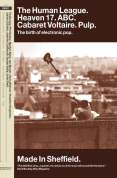 The perfect antidote to Twenty Four Hour Party People, Made in Sheffield
is a low budget documentary on the post-punk Sheffield scene. It shows
the real story of how a few groups of people formed some of the most
influential, successful or forgetful bands of all time. I was
disappointed that the film was shot in 4:3 but that is only a minor
gripe. I also found some of the coverage of bands that have been
rightfully consigned to the overflowing dustbin of history a bit too
long. However, the rest I found to be an utter delight. The
interviewees are honest about their achievments and, for the most part,
accept their place in history. I was very relieved that the Human
League's well-documented split was covered in a brief, honest, and
touching manner. The same old ground was not covered again in some
journalistic zeal. Herein must lie one of the stengths of the film:
good editing. The wheat has successfully been separated from the chaff.
As a bonus, this DVD edition features extra live coverage of some bands
(none interesting to me) and longer interviews. Made in Sheffield comes with my strong recommendation to any brainwashed reader and anyone with an interest in the history of modern music.
The perfect antidote to Twenty Four Hour Party People, Made in Sheffield
is a low budget documentary on the post-punk Sheffield scene. It shows
the real story of how a few groups of people formed some of the most
influential, successful or forgetful bands of all time. I was
disappointed that the film was shot in 4:3 but that is only a minor
gripe. I also found some of the coverage of bands that have been
rightfully consigned to the overflowing dustbin of history a bit too
long. However, the rest I found to be an utter delight. The
interviewees are honest about their achievments and, for the most part,
accept their place in history. I was very relieved that the Human
League's well-documented split was covered in a brief, honest, and
touching manner. The same old ground was not covered again in some
journalistic zeal. Herein must lie one of the stengths of the film:
good editing. The wheat has successfully been separated from the chaff.
As a bonus, this DVD edition features extra live coverage of some bands
(none interesting to me) and longer interviews. Made in Sheffield comes with my strong recommendation to any brainwashed reader and anyone with an interest in the history of modern music.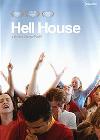 Evangelical Christianity continues to exert an inestimably important
influence on a large percentage of the world population. To the largely
secular world of modern art and media, academia and philosophy,
Christianity became a functional nonentity the day Nietzsche declared
the death of God. However, millions of people, many in prominent
positions of power and influence, continue to confound adversity with
their faith in and insistence on the importance of the life, death and
resurrection of Jesus the Christ. A recent film that I don't need to
mention by name has once again placed the issue of faith versus
secularism at the forefront of international dialogue. There is a
tendency among the majority of postmodernist thinkers, one which I seem
unable to shake, of regarding the New Testament and the evolution of
faith in Christ with a clinical distance, something to consider with
suspicion and detachment. Having grown up in a strictly atheist family
of intellectuals, and from a very young age having become interested in
a variety of divergent religious and transgressive occult beliefs, I
have had my brain blown open and wiped clean of the possibility of
investing fully in the kind of senseless wide-eyed faith, piety and
exclusivity demanded by the born-again movement. However, whether
reading the profoundly inspiring works of Kierkegaard or Pascal, or
hearing the revenant gospel of Blind Willie Johnson or the Gnostic
poetry cycles of Current 93, I cannot help but feel a strange
gravitational pull towards the faith of Paul, and George Ratliff's
documentary Hell House
is a perfect encapsulation of the enticing beauty of modern
Christianity. Ratliff trains his camera on Trinity Church, a large
Midwestern Pentacostal community that has devised a unique method of
convincing new members to join the faith. Each year at Halloween, they
erect an enormous haunted house, a series of rooms through which
visitors are ushered, each room vividly exhibiting a different
temptation of the modern world and its disastrous effect on the
spiritual life of its victims. Truly frightening one-act plays about
such taboo subjects as abortion, homosexuality, family violence, drug
addiction and occultism are enacted by a spirited group of young
born-agains. A variety of high-tech audio effects, pyrotechnics and
even live gunfire are utilized to make each vignette as confrontational
and frightening as possible, culminating in a nightmarish vision of
hell complete with the souls of the eternally damned writhing in
plexiglass cages, screaming penances on the deaf ears of grinning
devils. At the end of each Hell House tour, the audience members are
given the chance to redeem themselves and become born-again, signing
promissory contracts and praying to have their sins absolved in the
blood of Christ. The Hell House attracts tens of thousands of visitors
each year, and a staggeringly large percentage of the visitors are
convinced to take the vow of faith. The passion and work ethic applied
to the planning and implementation of the Hell House is the chief
subject of the film, and it provides fascinating insight. Ratliff's
non-judgmental lens is startlingly objective in its view of
middle-American Christians young and old, providing a view of modern
religious faith that avoids the "Jesus Freak" cliches I'd become
accustomed to. There are dozens of haunting scenes that have etched
themselves into my memory, chief among them a sequence showing a
typical church gathering, where the Pentacostals speak to God in their
"love language" — a string of nonsensical tongues and glossolalia that
serves to transcend reason and appeal directly to the spirit. An
appropriately ghostly musical score is provided by Matt and Bubba
Kadane. Hell House is beautifully and respectfully rendered
portrait of a silent majority; the triumphs of modern Christianity have
never been so vividly depicted.
Evangelical Christianity continues to exert an inestimably important
influence on a large percentage of the world population. To the largely
secular world of modern art and media, academia and philosophy,
Christianity became a functional nonentity the day Nietzsche declared
the death of God. However, millions of people, many in prominent
positions of power and influence, continue to confound adversity with
their faith in and insistence on the importance of the life, death and
resurrection of Jesus the Christ. A recent film that I don't need to
mention by name has once again placed the issue of faith versus
secularism at the forefront of international dialogue. There is a
tendency among the majority of postmodernist thinkers, one which I seem
unable to shake, of regarding the New Testament and the evolution of
faith in Christ with a clinical distance, something to consider with
suspicion and detachment. Having grown up in a strictly atheist family
of intellectuals, and from a very young age having become interested in
a variety of divergent religious and transgressive occult beliefs, I
have had my brain blown open and wiped clean of the possibility of
investing fully in the kind of senseless wide-eyed faith, piety and
exclusivity demanded by the born-again movement. However, whether
reading the profoundly inspiring works of Kierkegaard or Pascal, or
hearing the revenant gospel of Blind Willie Johnson or the Gnostic
poetry cycles of Current 93, I cannot help but feel a strange
gravitational pull towards the faith of Paul, and George Ratliff's
documentary Hell House
is a perfect encapsulation of the enticing beauty of modern
Christianity. Ratliff trains his camera on Trinity Church, a large
Midwestern Pentacostal community that has devised a unique method of
convincing new members to join the faith. Each year at Halloween, they
erect an enormous haunted house, a series of rooms through which
visitors are ushered, each room vividly exhibiting a different
temptation of the modern world and its disastrous effect on the
spiritual life of its victims. Truly frightening one-act plays about
such taboo subjects as abortion, homosexuality, family violence, drug
addiction and occultism are enacted by a spirited group of young
born-agains. A variety of high-tech audio effects, pyrotechnics and
even live gunfire are utilized to make each vignette as confrontational
and frightening as possible, culminating in a nightmarish vision of
hell complete with the souls of the eternally damned writhing in
plexiglass cages, screaming penances on the deaf ears of grinning
devils. At the end of each Hell House tour, the audience members are
given the chance to redeem themselves and become born-again, signing
promissory contracts and praying to have their sins absolved in the
blood of Christ. The Hell House attracts tens of thousands of visitors
each year, and a staggeringly large percentage of the visitors are
convinced to take the vow of faith. The passion and work ethic applied
to the planning and implementation of the Hell House is the chief
subject of the film, and it provides fascinating insight. Ratliff's
non-judgmental lens is startlingly objective in its view of
middle-American Christians young and old, providing a view of modern
religious faith that avoids the "Jesus Freak" cliches I'd become
accustomed to. There are dozens of haunting scenes that have etched
themselves into my memory, chief among them a sequence showing a
typical church gathering, where the Pentacostals speak to God in their
"love language" — a string of nonsensical tongues and glossolalia that
serves to transcend reason and appeal directly to the spirit. An
appropriately ghostly musical score is provided by Matt and Bubba
Kadane. Hell House is beautifully and respectfully rendered
portrait of a silent majority; the triumphs of modern Christianity have
never been so vividly depicted.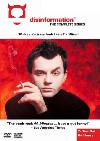 The only hope that remains for this piece of twisted wreckage that we
used to call civilization is that, as globalization and homogenization
increase, the counter-cultural and transgressive elements of humanity
will increase in direct proportion. Judging from historical social
paradigms, this seems a forgone conclusion, but in this age of
political puppetry, consumerist plasticity and televised humiliation,
the situation can at times seem almost hopeless. Richard Metzger
created Disinformation in 1996 as a hex against corporate-owned media
conglomerates, a source of alternative news reports and a hub for new
science and the counter-culture. Disinformation's publishing arm has
delivered on this mission statement, publishing a handful of impressive
volumes of essays including You Are Being Lied To and Book of Lies,
collecting the works of disparate underground journalists,
philosophers, occultists and outsiders under the broad banner of
alternative media. The unparalleled popularity of this unique
enterprise eventually led to a Disinformation TV series on the BBC,
hosted by Metzger himself. Containing segments on such various taboo
topics as transsexuality, extreme underground pornography, Satanism and
mind-control conspiracy theory, the show also featured profiles of
underground figures such as Joe Coleman, Paul Laffoley and Genesis
P-Orridge. In an absurd scheduling strategy, the Disinformation series
was placed in a prime-time programming slot directly following Ally
McBeal. It lasted only four episodes, but was soon purchased by the
Sci-Fi Channel for broadcast in the United States. Apparently, the
network execs realized too late that the show they had purchased was
too obscene, bizarre and transgressive to ever actually air, and the
series was promptly shelved. This 2-DVD set compiles the four complete
episodes of the series, along with some unaired segments and a bonus
DVD of footage from the 2001 Disinfo.Con held in New York City. The
series itself is ridiculously entertaining and often riotously funny, a
postmodern redux of the prime-time news magazine format, moving rapidly
from the insane misanthropic ramblings of Brother Theodore; to footage
of a real family lighting their drunken, passed-out uncle on fire (from
the cult underground video Uncle Goddamn); to an in-depth
investigation of the inter-dimensional, time-travelling homoerotic
conspiracies of the so-called Montauk Project. It's all delivered by
Metzger in a mischievous, cocked-eyebrow tone that leaves you wondering
if any of it can be taken seriously. This DVD is a marvelous
opportunity to take an objective look at the forbidden science of
Radionics, followed by an extended interview with cultural theorist
Howard Bloom, right after Songs in the Key of Z author Irwin
Chusid introduces the video for "In Canada" by the flamboyantly awful
outsider artist B.J. Snowden. The second disc contains a series of live
speeches and interviews from Disinformation heroes like Adam Parfrey,
Kenneth Anger and Robert Anton Wilson, appearing on stage at the
Disinfo.Con. The speakers discuss the current state of culture and
media, and their various explanations, solutions and provocations for
maintaining a grasp on individualism and expression in the new aeon.
Along with Robert Anton Wilson's Maybe Logic, I would recommend
this as essential viewing for anyone interested in moving beyond the
borders imposed on all of us by the all-pervasive meta-programming of
modern media.
The only hope that remains for this piece of twisted wreckage that we
used to call civilization is that, as globalization and homogenization
increase, the counter-cultural and transgressive elements of humanity
will increase in direct proportion. Judging from historical social
paradigms, this seems a forgone conclusion, but in this age of
political puppetry, consumerist plasticity and televised humiliation,
the situation can at times seem almost hopeless. Richard Metzger
created Disinformation in 1996 as a hex against corporate-owned media
conglomerates, a source of alternative news reports and a hub for new
science and the counter-culture. Disinformation's publishing arm has
delivered on this mission statement, publishing a handful of impressive
volumes of essays including You Are Being Lied To and Book of Lies,
collecting the works of disparate underground journalists,
philosophers, occultists and outsiders under the broad banner of
alternative media. The unparalleled popularity of this unique
enterprise eventually led to a Disinformation TV series on the BBC,
hosted by Metzger himself. Containing segments on such various taboo
topics as transsexuality, extreme underground pornography, Satanism and
mind-control conspiracy theory, the show also featured profiles of
underground figures such as Joe Coleman, Paul Laffoley and Genesis
P-Orridge. In an absurd scheduling strategy, the Disinformation series
was placed in a prime-time programming slot directly following Ally
McBeal. It lasted only four episodes, but was soon purchased by the
Sci-Fi Channel for broadcast in the United States. Apparently, the
network execs realized too late that the show they had purchased was
too obscene, bizarre and transgressive to ever actually air, and the
series was promptly shelved. This 2-DVD set compiles the four complete
episodes of the series, along with some unaired segments and a bonus
DVD of footage from the 2001 Disinfo.Con held in New York City. The
series itself is ridiculously entertaining and often riotously funny, a
postmodern redux of the prime-time news magazine format, moving rapidly
from the insane misanthropic ramblings of Brother Theodore; to footage
of a real family lighting their drunken, passed-out uncle on fire (from
the cult underground video Uncle Goddamn); to an in-depth
investigation of the inter-dimensional, time-travelling homoerotic
conspiracies of the so-called Montauk Project. It's all delivered by
Metzger in a mischievous, cocked-eyebrow tone that leaves you wondering
if any of it can be taken seriously. This DVD is a marvelous
opportunity to take an objective look at the forbidden science of
Radionics, followed by an extended interview with cultural theorist
Howard Bloom, right after Songs in the Key of Z author Irwin
Chusid introduces the video for "In Canada" by the flamboyantly awful
outsider artist B.J. Snowden. The second disc contains a series of live
speeches and interviews from Disinformation heroes like Adam Parfrey,
Kenneth Anger and Robert Anton Wilson, appearing on stage at the
Disinfo.Con. The speakers discuss the current state of culture and
media, and their various explanations, solutions and provocations for
maintaining a grasp on individualism and expression in the new aeon.
Along with Robert Anton Wilson's Maybe Logic, I would recommend
this as essential viewing for anyone interested in moving beyond the
borders imposed on all of us by the all-pervasive meta-programming of
modern media. This is the third DVD released on Alan Bishop's Sublime Frequencies imprint, and it offers a rare glimpse at the traditional music and ceremonies of the Tuareg people of Libya. The Tuareg are an ancient desert-dwelling people who have never been subsumed into the Arab/Muslim majority of the rest of the Middle East.
This is the third DVD released on Alan Bishop's Sublime Frequencies imprint, and it offers a rare glimpse at the traditional music and ceremonies of the Tuareg people of Libya. The Tuareg are an ancient desert-dwelling people who have never been subsumed into the Arab/Muslim majority of the rest of the Middle East.
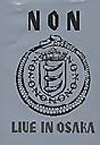 Boyd Rice is at the center of that spurious underground milieu which
rose to quasi-prominence in the eighties, combining industrial and
noise culture with LeVay-style Satanism, social Darwinism and fascist
aesthetics. The work of NON, and of its progenitors and followers,
influenced a generation of Dungeons and Dragons players, rivetheads and
white supremacists to unite their interests under an anti-establishment
banner that seemed pretty dangerous and sexy when it was new, but
appears a bit silly in retrospect. In truth, Boyd Rice created nothing
that hadn't been suggested previously by David Bowie, and especially
Throbbing Gristle. TG's interest in musical performance and noise as
cultural exorcism, agitation and political rally was clearly a
precedent for NON's subsequent exploitation. Boyd's only contribution
was to narrow and delineate these interests, and to incorporate his
neo-Satanic views and his sadistic sense of camp. Coming after the
double disappointment of last year's tepid Children of the Black Sun 5.1 surround-sound album, Soleilmoon officially releases Non Live in Osaka
on DVD, a frequently bootlegged recording of a legendary 1989 concert
in Japan. This concert was legendary because it was the first to unite
Boyd Rice, Douglas P., Rose McDowall, Tony Wakeford and Michael
Moynihan on one stage. They appear in a thick fog, flanked by red beams
of light, decked out in paramilitary gear, beating on giant barrel
drums, while Rice performs a series of propagandistic invocations in
his familiar modulated monotone. He spouts off the usual monologues
about war, might and superiority. None of this is particularly
ingenious, but it's very much better than any NON performance I've been
unfortunate enough to witness in this decade. In fact, it all seems
quite potent, with the big martial drumbeats, the grinding noise sweeps
and Boyd Rice's booming, echoing voice. I especially appreciated the
long introduction of Iron Guard marching songs directly preceding and
following the performance. Watching this transported me back to a time
when I thought it was quite daring to adopt an amoral, nihilistic
viewpoint and wear Nazi totenkopf symbols on my clothes. In addition to
some nifty photo slideshows accompanied by hilarious Japanese girl-pop,
the DVD also includes illuminating commentary and two experimental
short films by Boyd Rice. I've often heard these films compared to
Kenneth Anger's ritual-on-celluloid masterpieces such as Lucifer Rising and Invocation of My Demon Brother. Judging by the first film, Invocation,
Mr. Anger has nothing to worry about. This grainy, pornographic footage
has all the genius of any Hi-8 video made by a 13-year old goth
teenager from Des Moines. The second film, Black Sun, is much better, a Stan Brakhage-style celluloid trance-meditation on a spinning swastika.
Boyd Rice is at the center of that spurious underground milieu which
rose to quasi-prominence in the eighties, combining industrial and
noise culture with LeVay-style Satanism, social Darwinism and fascist
aesthetics. The work of NON, and of its progenitors and followers,
influenced a generation of Dungeons and Dragons players, rivetheads and
white supremacists to unite their interests under an anti-establishment
banner that seemed pretty dangerous and sexy when it was new, but
appears a bit silly in retrospect. In truth, Boyd Rice created nothing
that hadn't been suggested previously by David Bowie, and especially
Throbbing Gristle. TG's interest in musical performance and noise as
cultural exorcism, agitation and political rally was clearly a
precedent for NON's subsequent exploitation. Boyd's only contribution
was to narrow and delineate these interests, and to incorporate his
neo-Satanic views and his sadistic sense of camp. Coming after the
double disappointment of last year's tepid Children of the Black Sun 5.1 surround-sound album, Soleilmoon officially releases Non Live in Osaka
on DVD, a frequently bootlegged recording of a legendary 1989 concert
in Japan. This concert was legendary because it was the first to unite
Boyd Rice, Douglas P., Rose McDowall, Tony Wakeford and Michael
Moynihan on one stage. They appear in a thick fog, flanked by red beams
of light, decked out in paramilitary gear, beating on giant barrel
drums, while Rice performs a series of propagandistic invocations in
his familiar modulated monotone. He spouts off the usual monologues
about war, might and superiority. None of this is particularly
ingenious, but it's very much better than any NON performance I've been
unfortunate enough to witness in this decade. In fact, it all seems
quite potent, with the big martial drumbeats, the grinding noise sweeps
and Boyd Rice's booming, echoing voice. I especially appreciated the
long introduction of Iron Guard marching songs directly preceding and
following the performance. Watching this transported me back to a time
when I thought it was quite daring to adopt an amoral, nihilistic
viewpoint and wear Nazi totenkopf symbols on my clothes. In addition to
some nifty photo slideshows accompanied by hilarious Japanese girl-pop,
the DVD also includes illuminating commentary and two experimental
short films by Boyd Rice. I've often heard these films compared to
Kenneth Anger's ritual-on-celluloid masterpieces such as Lucifer Rising and Invocation of My Demon Brother. Judging by the first film, Invocation,
Mr. Anger has nothing to worry about. This grainy, pornographic footage
has all the genius of any Hi-8 video made by a 13-year old goth
teenager from Des Moines. The second film, Black Sun, is much better, a Stan Brakhage-style celluloid trance-meditation on a spinning swastika.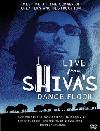 Timothy "Speed" Levitch was the star of the 1998 documentary The Cruise,
one of my favorite films of all time, which profiled the New York City
tour guide's unique perspectives on the city, his own transitory life
and deeper questions of existence. Through a series of bus loops,
interviews and walking tours, Speed displayed his enthusiasm, his
intelligence, his inquisitiveness and his romantic quest for
intellectual and spiritual fulfillment. One of the more eccentric
oddballs ever captured on film, Speed's extraordinary linguistic gifts
communicate his deep passion and jubilation at existence. His ideas are
the perfect antidote for a world that every day moves towards irony and
detachment, pessimism, cynicism and nihilism. Though it's a minor
travesty that The Cruise has never been released on the DVD
format (or even a VHS that doesn't cost upwards of $100), Aspyr Media
recently released this short documentary also featuring Speed, made
last year by Richard Linklater of Slacker. Linklater previously featured Speed in one segment of his animated masterpiece Waking Life,
a rambling episodic film that dealt with the many solutions to
existence offered by science, philosophy, magic and dreams. Clearly, he
was impressed enough to direct this follow-up film, which deals
primarily with Speed's response to the September 11, 2001 attack on New
York City - its historical context, its ramifications, and Speed's
unorthodox suggestion for what should be done with "Ground Zero." It is
a refreshing film that completely transcends the seemingly endless
parade of ridiculously schmaltzy, over-cautious and reverential garbage
that has been said about the tragedy by nearly everyone since 9/11.
Speed is anything but sentimental, living as he does in the eternal
"now," and his suggestion for the proper commemoration of Ground Zero
is uniquely inspired. The DVD also contains numerous extras, including
picture-in-picture annotations by Speed himself, as well as some live
appearances and readings from his recently published Speedology: Speed on New York City on Speed.
Standing at Ground Zero, Speed pontificates: "9/11 was one of the many
parables the great sagacious cosmopolitan guru has dropped upon this
population to illustrate one of its greatest points: the creation and
destruction that is the rhythm of the universe is a part of our
universe. Creation and destruction: the dance of Shiva. New York City
is an excellent dance floor for that specific choreography."
Timothy "Speed" Levitch was the star of the 1998 documentary The Cruise,
one of my favorite films of all time, which profiled the New York City
tour guide's unique perspectives on the city, his own transitory life
and deeper questions of existence. Through a series of bus loops,
interviews and walking tours, Speed displayed his enthusiasm, his
intelligence, his inquisitiveness and his romantic quest for
intellectual and spiritual fulfillment. One of the more eccentric
oddballs ever captured on film, Speed's extraordinary linguistic gifts
communicate his deep passion and jubilation at existence. His ideas are
the perfect antidote for a world that every day moves towards irony and
detachment, pessimism, cynicism and nihilism. Though it's a minor
travesty that The Cruise has never been released on the DVD
format (or even a VHS that doesn't cost upwards of $100), Aspyr Media
recently released this short documentary also featuring Speed, made
last year by Richard Linklater of Slacker. Linklater previously featured Speed in one segment of his animated masterpiece Waking Life,
a rambling episodic film that dealt with the many solutions to
existence offered by science, philosophy, magic and dreams. Clearly, he
was impressed enough to direct this follow-up film, which deals
primarily with Speed's response to the September 11, 2001 attack on New
York City - its historical context, its ramifications, and Speed's
unorthodox suggestion for what should be done with "Ground Zero." It is
a refreshing film that completely transcends the seemingly endless
parade of ridiculously schmaltzy, over-cautious and reverential garbage
that has been said about the tragedy by nearly everyone since 9/11.
Speed is anything but sentimental, living as he does in the eternal
"now," and his suggestion for the proper commemoration of Ground Zero
is uniquely inspired. The DVD also contains numerous extras, including
picture-in-picture annotations by Speed himself, as well as some live
appearances and readings from his recently published Speedology: Speed on New York City on Speed.
Standing at Ground Zero, Speed pontificates: "9/11 was one of the many
parables the great sagacious cosmopolitan guru has dropped upon this
population to illustrate one of its greatest points: the creation and
destruction that is the rhythm of the universe is a part of our
universe. Creation and destruction: the dance of Shiva. New York City
is an excellent dance floor for that specific choreography."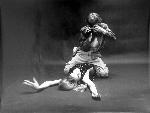 Italian auteur Michelangelo Antonioni's first film in English is also
arguably his most famous. Although it bears his trademark hypnotic,
dreamlike style, Blow-Up
transcends to another level with its commentary on and reflection of
London in 1966. Based on a story by Julio Cortázar and starring David
Hemmings, the plot revolves around a jaded fashion photographer who may
or may not have witnessed something sinister during a morning stroll in
the park. Like Antonioni's earlier films, Blow-Up progresses at
a languid tempo, and instead of plot, the emphasis lies primarily with
the essence of the characters, who range from aloof fashion models (one
in particular played by Veruschka, who was herself one of the most
famous models in the 1960s), naive groupies (Jane Birkin in one of her
first film roles), and a mysterious woman (Vanessa Redgrave)
relentlessly demanding the photographs taken of her and her lover by
the photographer during his walk in the park. The culture of 1960s
music is also plays a role in the film with the presence of the band
The Yardbirds during a club scene, although the score is dominated
mostly by the sleek, cool jazz of Herbie Hancock. It is endlessly
stylish (even now, nearly 40 years later), colorful and beautifully
photograped by Carlo di Ponti.
Italian auteur Michelangelo Antonioni's first film in English is also
arguably his most famous. Although it bears his trademark hypnotic,
dreamlike style, Blow-Up
transcends to another level with its commentary on and reflection of
London in 1966. Based on a story by Julio Cortázar and starring David
Hemmings, the plot revolves around a jaded fashion photographer who may
or may not have witnessed something sinister during a morning stroll in
the park. Like Antonioni's earlier films, Blow-Up progresses at
a languid tempo, and instead of plot, the emphasis lies primarily with
the essence of the characters, who range from aloof fashion models (one
in particular played by Veruschka, who was herself one of the most
famous models in the 1960s), naive groupies (Jane Birkin in one of her
first film roles), and a mysterious woman (Vanessa Redgrave)
relentlessly demanding the photographs taken of her and her lover by
the photographer during his walk in the park. The culture of 1960s
music is also plays a role in the film with the presence of the band
The Yardbirds during a club scene, although the score is dominated
mostly by the sleek, cool jazz of Herbie Hancock. It is endlessly
stylish (even now, nearly 40 years later), colorful and beautifully
photograped by Carlo di Ponti.Warner Brothers' edition marks the first appearance of the film on DVD, and it is a mixed affair. The transfer is presented in anamorphic widescreen aspect ratio of 1.85:1, which is generally quite clean, although occasionally fuzzy. The sound as well is not particularly dynamic, but this is likely a result of a film of its age. The extras include a music-only audio track, two theatrical trailers and a disappointingly useless commentary track by Antonioni scholar Peter Brunette. Perhaps the nicest extra is the use of the original artwork on the cover of the case.
Although it's often dismissed as pretentious, Blow-Up, which definitely suceeds in being cryptic, is an excellent film. It will likely never appeal to viewers in search of a film with a concrete plot, straightforward dialogue or an ending that neatly ties everything together. It is highly recommended viewing for anyone in search of an escape from the mindless drivel that typically fills the multiplexes in the first few months of the year.
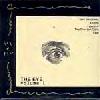 Although I've been contributing to The Brain for only two years, I've
been a fanatical reader and avid surfer of Brainwashed for nearly eight
years, and just because I work for the site now doesn't mean my
enthusiasm has faded. So, I was obviously excited last year when The
Eye made its first appearance with an impressive 35-minute documentary
on Emil Beaulieau. Initially, I wondered how anyone could possibly hope
to keep up the daunting schedule of producing a documentary every week.
Amazingly, confounding adversity, each week since has brought a brand
new episode to readers. I have nothing to do with the conception,
direction or production of The Eye, so I can say this without fear of
impropriety: The Eye is without peer; there is nothing else on the web
doing anything even remotely as interesting as this, and it's all for
free. This DVD-R, released as a fundraising effort, collects five
episodes of The Eye, including the aforementioned debut episode
profiling "America's Greatest Living Noise Artist." Through an engaging
montage of amazing live performances and numerous interviews with the
ebullient Beaulieau, his friends and cohorts, the doc builds an
intimate profile of the artist that illustrates clearly why Beaulieau
is a legend in noise circles. "Antony: The Androgynous Zone" is a
spellbindingly minimal short film that captures Antony (sans the
Johnsons) performing a rare solo piano recital in Boston, as well as
sitting for a revealing interview about his work, his influences and
his creative methods. "The Dresden Dolls: Brechtian Rock n' Roll" is an
in-depth feature on Boston's punk-cabaret duo on the eve of their
recent success. Delectable siren Amanda and adorable gothboy Brian sit
for an informative and humorous backstage interview about the origins
of the band. The Dolls performances excerpted throughout are top-notch.
The other two segments feature equally fascinating sketches of unsung
post-rock groups Pele and Tigersaw. Sound and picture quality are first
rate throughout the disc, far better than having to contend with that
little Quicktime window and computer speakers. A brief trailer for The
Eye DVD-R series is also included on the disc, with tantalizing
glimpses of episodes featuring Out Hud, Coil, Wire and others. I can
only hope that the future volumes may bring some of these artists to my
home theater.
Although I've been contributing to The Brain for only two years, I've
been a fanatical reader and avid surfer of Brainwashed for nearly eight
years, and just because I work for the site now doesn't mean my
enthusiasm has faded. So, I was obviously excited last year when The
Eye made its first appearance with an impressive 35-minute documentary
on Emil Beaulieau. Initially, I wondered how anyone could possibly hope
to keep up the daunting schedule of producing a documentary every week.
Amazingly, confounding adversity, each week since has brought a brand
new episode to readers. I have nothing to do with the conception,
direction or production of The Eye, so I can say this without fear of
impropriety: The Eye is without peer; there is nothing else on the web
doing anything even remotely as interesting as this, and it's all for
free. This DVD-R, released as a fundraising effort, collects five
episodes of The Eye, including the aforementioned debut episode
profiling "America's Greatest Living Noise Artist." Through an engaging
montage of amazing live performances and numerous interviews with the
ebullient Beaulieau, his friends and cohorts, the doc builds an
intimate profile of the artist that illustrates clearly why Beaulieau
is a legend in noise circles. "Antony: The Androgynous Zone" is a
spellbindingly minimal short film that captures Antony (sans the
Johnsons) performing a rare solo piano recital in Boston, as well as
sitting for a revealing interview about his work, his influences and
his creative methods. "The Dresden Dolls: Brechtian Rock n' Roll" is an
in-depth feature on Boston's punk-cabaret duo on the eve of their
recent success. Delectable siren Amanda and adorable gothboy Brian sit
for an informative and humorous backstage interview about the origins
of the band. The Dolls performances excerpted throughout are top-notch.
The other two segments feature equally fascinating sketches of unsung
post-rock groups Pele and Tigersaw. Sound and picture quality are first
rate throughout the disc, far better than having to contend with that
little Quicktime window and computer speakers. A brief trailer for The
Eye DVD-R series is also included on the disc, with tantalizing
glimpses of episodes featuring Out Hud, Coil, Wire and others. I can
only hope that the future volumes may bring some of these artists to my
home theater.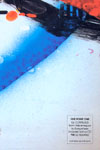 Five Point One is comprised of two discs: a DVD compiling all ten the videos from Cornelius's 2002 album Point
and an audio CD of remixes from the album contributed by fans as part
of a contest. The videos, while creative, have a subtle, background
feel to them, and seem to be intended more for use in Cornelius's live
shows than on their own (and indeed, they were played as a backdrop
during his tour for Point). While not wholly uninteresting, the
videos are static in their content, usually relying on one or two
primary images. "Point of View Point" shows cars and trains in motion,
while "Drop" features a little boy standing in front of a sink while
the water, synchonized to the beat, drips into the basin. The most
enjoyable of the videos is "Tone Twilight Zone," with its images of two
fingers walking (Yellow Pages-style) through a landscape of ordinary
household objects. The remix CD, PM, is a mixed bag, running
the gamut from electronic dance to japanoise to thrashy rock. Some are
cute and catchy, and others are forgettable.
Five Point One is comprised of two discs: a DVD compiling all ten the videos from Cornelius's 2002 album Point
and an audio CD of remixes from the album contributed by fans as part
of a contest. The videos, while creative, have a subtle, background
feel to them, and seem to be intended more for use in Cornelius's live
shows than on their own (and indeed, they were played as a backdrop
during his tour for Point). While not wholly uninteresting, the
videos are static in their content, usually relying on one or two
primary images. "Point of View Point" shows cars and trains in motion,
while "Drop" features a little boy standing in front of a sink while
the water, synchonized to the beat, drips into the basin. The most
enjoyable of the videos is "Tone Twilight Zone," with its images of two
fingers walking (Yellow Pages-style) through a landscape of ordinary
household objects. The remix CD, PM, is a mixed bag, running
the gamut from electronic dance to japanoise to thrashy rock. Some are
cute and catchy, and others are forgettable.
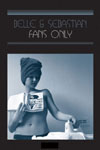 Fans Only
takes on the task of documenting Belle & Sebastian's inception in
1995 through their seven years of recordings for Matador and Jeepster.
Their videos and live footage from various performances around ther
world are interwoven into behind-the-scenes material and interviews.
The videos proper are largely charmingly appropriate twee shots of the
band (there are at least a few where they're seen clutching various
stuffed animals) and their friends using super-8 cameras and other
low-budget equipment. Highlights include a rendition of France Gall's
"Poupee de Cire, Poupee de Son," recorded for French television and the
video for "Legal Man," which features the band decked out in full mod
regalia on stage in a decadent nightclub surrounded by freely flowing
martinis and bellydancers, and a hilarious interview with the band for
a Brazilian TV show. Clocking in at 136 minutes, Fans Only
drags at times, but is for the most entertaining and does an excellent
job of capturing the lighthearted, playful essence of the band.
Fans Only
takes on the task of documenting Belle & Sebastian's inception in
1995 through their seven years of recordings for Matador and Jeepster.
Their videos and live footage from various performances around ther
world are interwoven into behind-the-scenes material and interviews.
The videos proper are largely charmingly appropriate twee shots of the
band (there are at least a few where they're seen clutching various
stuffed animals) and their friends using super-8 cameras and other
low-budget equipment. Highlights include a rendition of France Gall's
"Poupee de Cire, Poupee de Son," recorded for French television and the
video for "Legal Man," which features the band decked out in full mod
regalia on stage in a decadent nightclub surrounded by freely flowing
martinis and bellydancers, and a hilarious interview with the band for
a Brazilian TV show. Clocking in at 136 minutes, Fans Only
drags at times, but is for the most entertaining and does an excellent
job of capturing the lighthearted, playful essence of the band. 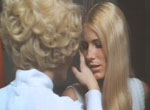 The legend of the Countess Bathory, the infamous despot and vampiress who
purportedly slaughted hundreds of virgins in order to maintain her own
youth, beauty, and immortality, is a tale that has been recreated for the
screen a number of times. In Harry Kuemel's 1971 film Daughters of
Darkness, the character of the medieval Hungarian countess is updated to
the 20th century, and appears mysteriously in the lives of two newlyweds in
an off-season Belgian resort. The couple, played by Danielle Ouimet and
John Karlen (star of Dark Shadows), discover that they are alone in
the hotel, bar the countess, her attractive young female companion, Ilona,
and a suspicious hotel clerk. The Countess (played to perfection by the
peerless Delphine Seyrig) expresses a subtle, yet immediate interest in the
couple, who seem to be experiencing marital troubles from the very start,
and ultimately she and Ilona set to seducing them both. That is, until
their sexual schemes quickly turn into murder.
The legend of the Countess Bathory, the infamous despot and vampiress who
purportedly slaughted hundreds of virgins in order to maintain her own
youth, beauty, and immortality, is a tale that has been recreated for the
screen a number of times. In Harry Kuemel's 1971 film Daughters of
Darkness, the character of the medieval Hungarian countess is updated to
the 20th century, and appears mysteriously in the lives of two newlyweds in
an off-season Belgian resort. The couple, played by Danielle Ouimet and
John Karlen (star of Dark Shadows), discover that they are alone in
the hotel, bar the countess, her attractive young female companion, Ilona,
and a suspicious hotel clerk. The Countess (played to perfection by the
peerless Delphine Seyrig) expresses a subtle, yet immediate interest in the
couple, who seem to be experiencing marital troubles from the very start,
and ultimately she and Ilona set to seducing them both. That is, until
their sexual schemes quickly turn into murder.
Although Daughters of Darkness is slowly paced, it avoids being tedious. Thanks to its beautiful photography of the posh resort and its eerie Bruges surroundings, superior performances by the cast (particularly Seyrig who nearly floats through most of her scenes in a series of breathtaking outfits), and a penetrating and haunting overall atmosphere, this film is far better than it could have been in less capable hands. Jean Ferry, a surrealist affiliate who penned a number of significant French films, co-wrote the screenplay, which is rife with often incomprehensible situations and stiff dialogue. Daughters is indeed part campy kitsch-fest, but director Kuemel appears to accept this as part and parcel of making an extremely low-budget film. However, it's certainly to look past the film's faults to discover its true dreamlike genius.
Previously available on DVD in a mostly bare-bones edition, the fab folks at Blue Underground have re-released Daughters of Darkness as a Director's cut edition and with a widescreen transfer. It includes some killer extras to top the whole thing off, including two separate commentary tracks (one with Harry Kuemel and the other with John Karlen), and a charming interview with actress Andrea Rau, who plays Ilona.
Mondo Macabro, as its name suggests, is devoted to releasing onto DVD long-forgotten horror films from around the world. Their most recent unearthing is Seven Women for Satan (aka Les Weekends Malefiques du Comte Zaroff), made in France in 1974. Starring and directed by Michel Lemoine, it recounts the tale of a Parisian businessman, Count Zaroff, who retreats to his chateau for murder and debauchery on the weekends. He is reluctantly assisted in these pursuits by his servant, played by Howard Vernon (a regular in Jess Franco films throughout the 1970s).
Mute/Spoon
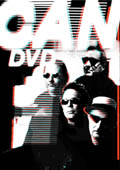 I've been listening to Can records for years without any kind of visual
counterpart other than the one created in my fertile imagination. Other
than the few photographs on the inner sleeve of the Tago Mago
LP, I had no idea what the band really looked like, or what their stage
presence would be, what kind of clothes they wore, or how they behaved
in interviews. In part, it was this total lack of a visual context that
made their music all the more mysterious and addictive to me. I
imagined a group of hairy future primitives; shamanic heads full of
acid and tightly wound sagacity, like Gandalf crossed with The Beatles
crossed with those aliens from Fantastic Planet.
I've been listening to Can records for years without any kind of visual
counterpart other than the one created in my fertile imagination. Other
than the few photographs on the inner sleeve of the Tago Mago
LP, I had no idea what the band really looked like, or what their stage
presence would be, what kind of clothes they wore, or how they behaved
in interviews. In part, it was this total lack of a visual context that
made their music all the more mysterious and addictive to me. I
imagined a group of hairy future primitives; shamanic heads full of
acid and tightly wound sagacity, like Gandalf crossed with The Beatles
crossed with those aliens from Fantastic Planet.
When Mute/Spoon announced the release of Can DVD, featuring hours of live and documentary footage of the band across two DVDs, I was excited, but apprehensive. Any video image of the group was bound to pale in comparison to the elaborate image I had extrapolated while listening to their explosive records. I was right to be apprehensive. While it is truly wonderful to finally be able to view and own rarities like the 1972 film Can Free Concert and the early performances excerpted on Can Documentary, the rest of this DVD is frightening and pointless. Can Notes is an overlong documentary assembled by Wim Wenders collaborator Peter Przygodda from years of random video footage. There is a heavy emphasis on the period leading up to and following the release of the Sacrilege remix album. Holger Czukay, Irmin Schmidt, Jaki Liebezeit and Michael Karoli are paraded out, well past their prime, to answer a bunch of submental Actor's Studio-style questions, which elicits exasperating, embarrassing results. Why would you sit down with a genius like Holger Czukay and ask him to name his least favorite word? It ends up playing like a low-rent Where Are They Now? on Can, but with the noticeable absence of any material on vocalists Damo Suzuki and Malcolm Mooney, both of whom are alive and well, and continue to make music.
There are four Dolby 5.1 remixes of songs from the Can catalog, which on the surface seemed like an interesting idea, until I realized that the tracks chosen are all drawn from average-to-terrible latter-day albums Flow Motion, Landed and Rite Time. The multi-dimensional retuning adds nothing to this lackluster material. I should add that Can DVD also comes with an audio CD of material by the core members' post-Can projects. While it's all nice enough, it seems strange that this is packaged with something called Can DVD. Can Notes is also stuffed full of footage and material from these later solo outings. It's almost as if I'm being force-fed this stuff. As interesting as one might find the music of Clubs Off Chaos or Irmin Schmidt's Gormenghast opera, one would need to employ heavy historical revisionism to consider this later work to be nearly as significant as the groundbreaking work of Can. Brian Eno contributes an amusing one-minute video which manages to be completely self-aggrandizing even as it purports to pay tribute to his heroes. The disc also includes the presentation of an Echo Lifetime Achievement Award to the band, but strangely, the award is presented to the surviving members of Can by, er, The Red Hot Chili Peppers.
Can Documentary contains many terrific moments - the band performing "Paperhouse" live on German television, a delightfully standoffish interview and excellent promo clips for "Dizzy, Dizzy" and their leftfield disco hit "I Want More." Unfortunately, the film spends a disproportionate amount of time on the ill-advised Rite Time reunion album, and ends with a shamefully piss-poor video for the Westbam remix from Sacrilege. Can Free Concert - made in 1972 by Peter Przygodda - is the DVD's sole moment of pure genius. A 51-minute film combining footage from a 1972 concert in Cologne with candid material of Can composing tracks for Tago Mago inside their Inner Space studio, Can Free Concert displays the full explosive range of the improvisational chemistry between the five band members. The director uses disorienting parallel editing to emphasize the primitive, primal and shamanic qualities of Can's avant-neanderthal noise. It's a pure delight to see Damo Suzuki wearing a red-and-pink velvet jumpsuit, furiously shaking his black mane in time to Jaki Liebezeit's tribal trance drumming. Later, in the studio, Damo works out the vocals for "Bring Me Coffee or Tea" with quiet intensity, and I finally experience the perfect visual equivalent to Can's incomparable magic.
Mute/Spoon should have placed this and the Can Documentary
onto a single DVD and retailed it for the price of a CD. Instead, we
have this overstuffed, prohibitively priced package full of pointless
junk, with a little bit of genius thrown in for color.
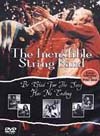 I can remember a time only a few years ago when professing an interest
in The Incredible String Band or any of their 1960's British psych-folk
contemporaries would immediately get one branded a clueless hippie
burnout. Now, following the band's recent reunion and some well-timed
reissues of their back catalog, The Incredible String Band are once
again being accepted back into the fold as the creators of an
impressive musical zeitgeist, idiosyncratic and highly influential.
Matmos have acknowledged the Incredibles as a big influence on their
newest album, and Current 93 have virtually mimicked them (down to a
replica of ISB's album cover) on Earth Covers Earth.
On the eve of Mike Heron and Robin Williamson's reunion concert in
London, playing alongside the likes of Acid Mothers Temple, Gong and
Damo Suzuki of Can, Wienerworld Video unveils a lost artifact from
their zenith creative period, the 50-minute film Be Glad for the Song Has No Ending.
This DVD contains the entire original film, which was produced for the
BBC but never aired, deemed far too odd and abstract for a television
audience. The DVD also contains a brief interview with director Peter
Neil, who takes pains to give the Incredibles full credit for the shape
and tone of the film. Be Glad is nothing like a typical
rockumentary. There are very few interviews with Heron and Williamson,
and when they do talk it's usually in philosophical aphorisms and
poetic reverie. Robin Williamson's glassy-eyed, beatific revelations
that "we are involved in the act of creation" really drives home the
peculiar mix of pagan and Gnostic ideas that inform his lyrics. Be Glad
tries to accomplish on film what the Incredibles do on record - a
whimsical, psychedelic journey through their eclectic music, their
communal lifestyle and their pastoral "Wicker Man" mysticism. The film
contains concert footage, including Williamson's hushed recitation of
his poem-manifesto "Head." There are terrific live-in-studio renditions
of classics such as "The Iron Stone" and "All Writ Down." At one point,
a road manager reads a list of all of the instruments used by the
Incredibles in a typical performance, and the sheer number of stringed
and percussive instruments needed to achieve their sublime ethno-folk
sound is absurdly comical. The last twenty minutes of the film is taken
up with a mystical passion play called "The Pirate and the Crystal
Ball," an allegorical tale set to an original ISB soundtrack, every bit
as surreal and outlandish as Kenneth Anger's Magick Lantern Cycle
films. It's clear that a lot of thought went into this film, and the
original music on the soundtrack is some of the Incredibles' finest and
most adventurous. Be Glad For the Song Has No Ending is an
indispensable document, capturing on film that strange spell that The
Incredible String Band were capable of weaving at the height of their
power.
I can remember a time only a few years ago when professing an interest
in The Incredible String Band or any of their 1960's British psych-folk
contemporaries would immediately get one branded a clueless hippie
burnout. Now, following the band's recent reunion and some well-timed
reissues of their back catalog, The Incredible String Band are once
again being accepted back into the fold as the creators of an
impressive musical zeitgeist, idiosyncratic and highly influential.
Matmos have acknowledged the Incredibles as a big influence on their
newest album, and Current 93 have virtually mimicked them (down to a
replica of ISB's album cover) on Earth Covers Earth.
On the eve of Mike Heron and Robin Williamson's reunion concert in
London, playing alongside the likes of Acid Mothers Temple, Gong and
Damo Suzuki of Can, Wienerworld Video unveils a lost artifact from
their zenith creative period, the 50-minute film Be Glad for the Song Has No Ending.
This DVD contains the entire original film, which was produced for the
BBC but never aired, deemed far too odd and abstract for a television
audience. The DVD also contains a brief interview with director Peter
Neil, who takes pains to give the Incredibles full credit for the shape
and tone of the film. Be Glad is nothing like a typical
rockumentary. There are very few interviews with Heron and Williamson,
and when they do talk it's usually in philosophical aphorisms and
poetic reverie. Robin Williamson's glassy-eyed, beatific revelations
that "we are involved in the act of creation" really drives home the
peculiar mix of pagan and Gnostic ideas that inform his lyrics. Be Glad
tries to accomplish on film what the Incredibles do on record - a
whimsical, psychedelic journey through their eclectic music, their
communal lifestyle and their pastoral "Wicker Man" mysticism. The film
contains concert footage, including Williamson's hushed recitation of
his poem-manifesto "Head." There are terrific live-in-studio renditions
of classics such as "The Iron Stone" and "All Writ Down." At one point,
a road manager reads a list of all of the instruments used by the
Incredibles in a typical performance, and the sheer number of stringed
and percussive instruments needed to achieve their sublime ethno-folk
sound is absurdly comical. The last twenty minutes of the film is taken
up with a mystical passion play called "The Pirate and the Crystal
Ball," an allegorical tale set to an original ISB soundtrack, every bit
as surreal and outlandish as Kenneth Anger's Magick Lantern Cycle
films. It's clear that a lot of thought went into this film, and the
original music on the soundtrack is some of the Incredibles' finest and
most adventurous. Be Glad For the Song Has No Ending is an
indispensable document, capturing on film that strange spell that The
Incredible String Band were capable of weaving at the height of their
power.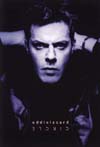 This performance was filmed in New York City during the summer of 2000,
during the follow up tour to Eddie Izzard's breakout US tour Dress to
Kill, which subsequently became an Emmy award-winning hit as an HBO
special. While most of the cross-dressing actor / comedian's fans will
rejoice at the availability of more of his work (this DVD is one of only
three live gigs released in North America), those looking for a repeat of
the brilliantly funny previous release could be in for a disappointment.
Circle, which in fact does have a few brilliant moments, seems to
borrow heavily at times from Izzard's back catalogue of material. Although
his standup has always been thematic (religion, history, and politics are
frequent subjects of his largely improvised, often surreal onstage musings),
longtime fans will likely be able to pinpoint the specific previous sources
of various lines in this performance. Additionally, his frenetic switches
from subject to subject (Jesus conversing with dinosaurs one minute to
telling the Queen her dress is the "dog's bollocks" the next) and brief
confused pauses in which Izzard tries to get back on topic, seem less
slightly less charming and more perplexing than in Dress to Kill.
Nonetheless, decked out in Dolce & Gabbana leather S&M trousers, spiked
heels and diamond necklace, Eddie is still as intelligent, thoughtful and
lovable as ever. Whether he's doing an impression of God in a James Mason
voice, or acting out a "lost scene" from Star Wars in which Darth
Vader complains about the wet lunch trays in the Death Star cafeteria, he
strikes a wonderful balance between intellectualism and pure silliness.
What's more is the audience still seems to adore him, even when he seems to
be going astray, and Izzard is mutually respectful.
This performance was filmed in New York City during the summer of 2000,
during the follow up tour to Eddie Izzard's breakout US tour Dress to
Kill, which subsequently became an Emmy award-winning hit as an HBO
special. While most of the cross-dressing actor / comedian's fans will
rejoice at the availability of more of his work (this DVD is one of only
three live gigs released in North America), those looking for a repeat of
the brilliantly funny previous release could be in for a disappointment.
Circle, which in fact does have a few brilliant moments, seems to
borrow heavily at times from Izzard's back catalogue of material. Although
his standup has always been thematic (religion, history, and politics are
frequent subjects of his largely improvised, often surreal onstage musings),
longtime fans will likely be able to pinpoint the specific previous sources
of various lines in this performance. Additionally, his frenetic switches
from subject to subject (Jesus conversing with dinosaurs one minute to
telling the Queen her dress is the "dog's bollocks" the next) and brief
confused pauses in which Izzard tries to get back on topic, seem less
slightly less charming and more perplexing than in Dress to Kill.
Nonetheless, decked out in Dolce & Gabbana leather S&M trousers, spiked
heels and diamond necklace, Eddie is still as intelligent, thoughtful and
lovable as ever. Whether he's doing an impression of God in a James Mason
voice, or acting out a "lost scene" from Star Wars in which Darth
Vader complains about the wet lunch trays in the Death Star cafeteria, he
strikes a wonderful balance between intellectualism and pure silliness.
What's more is the audience still seems to adore him, even when he seems to
be going astray, and Izzard is mutually respectful.The DVD release contains some nice extras, including "behind the scenes" documentary footage shot during the Circle tour, a somewhat muddled-through commentary track by Eddie, and a performance from the Dress to Kill tour in French (including English subtitles). All in all, it's a great package, and a good prelude to Izzard's upcoming world tour this fall.
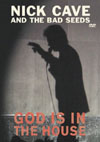 As the cost of technology comes down consistently, it's puzzling to
note that few labels are taking advantage of the marvelous
opportunities before them. This is a fantastic example of a music DVD
done properly, despite it being a few years after the album release of No More Shall We Part.
Most of the material comes from that album, but considering other live
videos available from the Bad Seeds, it serves as a fine addition to
the library. Here, the Bad Seeds are captured at a concert in Lyon,
France (2001). It just happens to be the last tour that Neubauten's
Blixa Bargeld is supposed to perform on and here, he, along with Mick
Harvey and Dirty Three's Warren Ellis are just as entertaining to watch
as Nick Cave, himself. Cave may not quite ever become a household name
but he is most certainly becoming a musical legend. Cave's ballads
speak volumes and his stage presence is intense, much like an
evangelical preacher. The experience of seeing the Bad Seeds live is so
intense and dramatic, that it blows away all expectations from merely
listening to the records at home. Even a lukewarm album can achieve a
thunderous accomplishment as the Bad Seeds are all fantastic players
and spend so much time touring. The concert is elegantly shot and
edited with a good amount of inclusion of the entire group, and the
sound is excellent. In addition, Mute thankfully decided not to hold
back on this release and included all three music videos from the album
along with a short documentary on the recording of the album. Coupled
with the album and the experience is complete. I can hope that it's
only a matter of time that labels will release DVDs like this WITH the
CD of said album. (But in all honesty, expect it to be a Japanese
"perk" for about 10 years before the rest of the world catches on.)
As the cost of technology comes down consistently, it's puzzling to
note that few labels are taking advantage of the marvelous
opportunities before them. This is a fantastic example of a music DVD
done properly, despite it being a few years after the album release of No More Shall We Part.
Most of the material comes from that album, but considering other live
videos available from the Bad Seeds, it serves as a fine addition to
the library. Here, the Bad Seeds are captured at a concert in Lyon,
France (2001). It just happens to be the last tour that Neubauten's
Blixa Bargeld is supposed to perform on and here, he, along with Mick
Harvey and Dirty Three's Warren Ellis are just as entertaining to watch
as Nick Cave, himself. Cave may not quite ever become a household name
but he is most certainly becoming a musical legend. Cave's ballads
speak volumes and his stage presence is intense, much like an
evangelical preacher. The experience of seeing the Bad Seeds live is so
intense and dramatic, that it blows away all expectations from merely
listening to the records at home. Even a lukewarm album can achieve a
thunderous accomplishment as the Bad Seeds are all fantastic players
and spend so much time touring. The concert is elegantly shot and
edited with a good amount of inclusion of the entire group, and the
sound is excellent. In addition, Mute thankfully decided not to hold
back on this release and included all three music videos from the album
along with a short documentary on the recording of the album. Coupled
with the album and the experience is complete. I can hope that it's
only a matter of time that labels will release DVDs like this WITH the
CD of said album. (But in all honesty, expect it to be a Japanese
"perk" for about 10 years before the rest of the world catches on.)
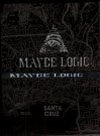 For the last 40 years of consensus space-time, the entity known as Robert Anton Wilson - author, philosopher, neuroscientist, psychedelic comedian, mystic, shaman and Pope - has been tirelessly exploring the tantalizing, puzzling, enigmatic, bizarre, mind-bending and funny metaphysical mysteries of human existence. Now comes Maybe Logic, a definitive documentary about Pope Bob, in the form of an independently released two-DVD set from Deepleaf Productions.
For the last 40 years of consensus space-time, the entity known as Robert Anton Wilson - author, philosopher, neuroscientist, psychedelic comedian, mystic, shaman and Pope - has been tirelessly exploring the tantalizing, puzzling, enigmatic, bizarre, mind-bending and funny metaphysical mysteries of human existence. Now comes Maybe Logic, a definitive documentary about Pope Bob, in the form of an independently released two-DVD set from Deepleaf Productions.
In 1977, Robert Anton Wilson published Cosmic Trigger, an unparalleled epic adventure of deliberately induced brain change, interstellar revelations and mystical initiation. Cosmic Trigger uniquely accounted Wilson's mind-expanding voyage from an atheist, ex-Catholic skeptic to a Buddhist, a Sufi, a Gnostic, a Witch, a Thelemic Magician and a Discordian Pope. Interwoven into this singularly electrifying narrative were ruminations on the Illuminati, synchronicity, conspiracy theory, Finnegan's Wake, Timothy Leary's eight-circuit model of human consciousness, Aleister Crowley, quantum physics and transactional psychology. Robert Anton Wilson had tapped into a current of thought about the universe that has existed since the dawn of man, and was able to make a linkage between all of the various "solutions" to the impossibly enigmatic nature of the universe - scientific theories, philosophies, religious dogmas and cult doctrines - and in the process, he mapped the interior of our belief-derived reality tunnels. While there are dozens of other futurists, mystics and new-age philosophers who have written about such ideas, no one could ever match the engaging humor, the inherent rationalism and the contagious adventurousness of Robert Anton Wilson's more than 30 books, plays and novels. Pope Bob's unique convergence of ideas has served as the basis for the Church of the Subgenius, The Temple of Psychick Youth and the current of occultism known as Chaos Magick.
The main attraction of this DVD set is the one-and-a-half hour video documentary Maybe Logic. This documentary is obviously a labor of love, combining old footage with abundant new interviews with Wilson himself, as well as a host of colleagues, admirers and disciples. We see Pope Bob as an old man - an eccentrically cherubic, white-bearded cross between Confucius, Siddhartha and Mr. Natural. Sadly, he is in the advanced stages of post-polio syndrome, and is confined to a wheelchair, in acute pain for most of his waking hours. Always a libertarian thinker, his recent illness has led him to become an ardent supporter of medicinal marijuana, which he claims is the only analgesic for his constant, intense pain. But despite these tragedies, one cannot help but be impressed by Robert Anton Wilson's unshakable optimism, his creativity, and his unending inquisitiveness. These interviews are edited together with aplomb, the director using a myriad of cutting-edge, mind-bending digital video effects to further intensify the cosmic revelations in Wilson's monologues. The soundtrack is equally superb, with suitably thought-provoking contributions from Boards of Canada, Matt Elliott, The Cinematic Orchestra, Tarantel, Funki Porcini and Amon Tobin.
The second DVD includes supplemental interviews and lectures about various subjects, from James Joyce's Finnegan's Wake to the allegorical BBC television series The Prisoner, as well as some exercises designed to awaken your own internal neurological warrior. If you were hazy about quantum physics, mysticism, magick, conspiracy theories and existentialism before, watching this DVD could truly trigger a Kundalini-like awakening of your dormant consciousness. As a bonus, the simple act of watching this DVD will officially ordain you, the viewer as a Discordian Pope. Wilson's final message is that the universe is "plural and mutable" - a vast, un-simultaneously comprehended confluence of subjectively created belief systems and reality tunnels. If you can properly understand Pope Bob's universe, there can be no room for intolerance or misunderstanding, only a constantly renewed sense of vigour, optimism and adventure in discovering the staggering creative potential of the human nervous system.






